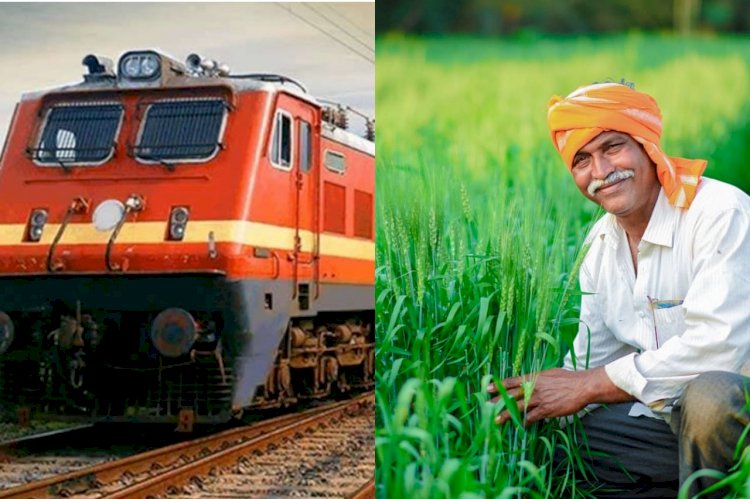On 7th August 2020, Indian Railways inaugurated the first ever ‘Kisan Rail’ from Maharashtra’s Devlali to Bihar’s Danapur. The train was given the green signal on a video conference call attended by Indian Union Minister of Agriculture and Farmers Welfare, Rural Development and Panchyati Raj- Mr. Narendra Singh Tomar and Minister of Railways and Commerce & Industry- CA Mr. Piyush Goyal.
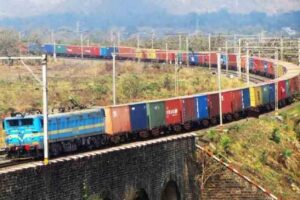 The train will run on a weekly basis from various parts of the country. Kisan Rail translating to Farmer’s Train will make sure that agro products reach from one corner to another corner of our Nation. This farmers’ exclusive train will carry fruits and vegetables and will make stoppages at several stations, pick-up the produces and deliver them.
The train will run on a weekly basis from various parts of the country. Kisan Rail translating to Farmer’s Train will make sure that agro products reach from one corner to another corner of our Nation. This farmers’ exclusive train will carry fruits and vegetables and will make stoppages at several stations, pick-up the produces and deliver them.
Government’s Initiative for Farmers and the Agriculture Sector:
In the Union Budget 2020, Finance Minister of India Nirmala Sitharaman announced this novel initiative in the early months foreseeing the setting up of a ‘Kisan Rail’ through the Public-Private Partnership (PPP) contract for transportation of perishable goods directly from the farms to the local vendors’ market.
In the month of March 2020, Prime Minister Narendra Modi announced a Nationwide lockdown to stop the spread of Coronavirus and sustain the well-being of 1.3 billion citizens. World economy trembled in the months of April to June. While the industries and businesses came to a halt, the budget writhed for income and financial sources.
However, the worst may now slowly end for India and the road ahead will take the economy back on the track with 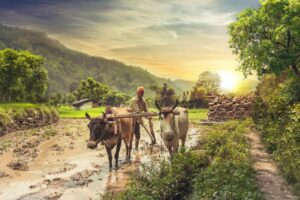 new start-ups and initiatives to revive our fiscal health.
new start-ups and initiatives to revive our fiscal health.
“With India unlocking, the worst seems to be over as high-frequency indicators show an improvement from the unprecedented trench our economy had hit in April 2020,” said the periodic report by the Department of Economic Affairs.
As commercial activity still has a long road ahead to recovery, the truncheon of Economic recovery is in the influences of Agriculture sector contributing to about 15 % of total GVA. We have all learnt in School – India is an Agricultural Nation and this time they are truly set to pillow the shock of COVID-19 pandemic on Indian economy 2020-21.
Minister for Railways Piyush Goyal said, ‘Kisan Rail will help farmers becoming Aatma Nirbhar – self-dependent and bring prosperity to their lives.’
Digital India: Mobile App launched for Cashew Farmers, soon to be developed for all produces.
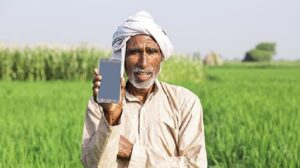 The Cashew India app developed by the Indian council of agricultural research (ICAR) in the state of Karnataka, is now available for download listed on Google Play Store for free in 11 regional languages all across India.
The Cashew India app developed by the Indian council of agricultural research (ICAR) in the state of Karnataka, is now available for download listed on Google Play Store for free in 11 regional languages all across India.
‘It gives comprehensive information on cashew grafts, nursery, cultivation, plant protection, post-harvest processing, market information and e-market beneficial for farmers, researchers, developmental agencies and processors at one place’, said S.Mohan , senior scientist at DCR in a National press release.
It was he who conceptualised and designed the application. He explained that a farmer or user of the app can upload images/videos related to cashew cultivation. The app is developed for states namely- Gujarat, Maharashtra, Tamil Nadu, Andhra Pradesh, Meghalaya, Chhattisgarh, Odisha, Kerala, Karnataka and West Bengal.
This multilingual app is available in Hindi, English, Malayalam, Tamil, Telugu, Odia, Bengali Gujarati, Marathi, Kannada, and Garo languages.
Cashew is one of the most important plantation crop in the country and it brings in considerable foreign exchange earnings from exports.
Farmers are back on the fields due to high demand in pandemic:
The monsoon has entered in most parts of India and farmers have started planting the harvest crop. The Covid-19 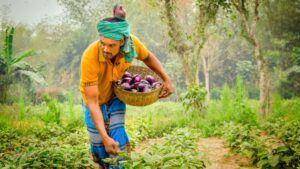 pandemic has affected the already distressed Agriculture sector in the country in different ways, and the stakes couldn’t be higher for farmers in this 2020 cropping season.
pandemic has affected the already distressed Agriculture sector in the country in different ways, and the stakes couldn’t be higher for farmers in this 2020 cropping season.
Farmers were feeling helpless watching their standing crops be subject to lockdown rules and bear the loss as well as lookout for citizens’ hunger. However, in the early stages of lockdown, agriculture operations were allowed to function for everybody’s sake.
Covid-19 has aggrieved more than a lakhs of people, with infections rising rapidly and spreading at double rates. Southern Asian countries have taken a beating from the lockdowns imposed to curb the spread of the virus, and with growth shrinking in the industrial and services sectors, expectation is now pinned on adequate rainfall and farmers gathering a good harvest to respire life back into the assaulted financial prudence.
The Two L’s of despair: Labour shortage and Locust Havoc.
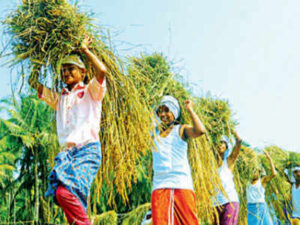 The lockdown led to a mass evacuation of migrant labourers to their villages, which resulted in labour shortage in places of work and labour intensive work stations.
The lockdown led to a mass evacuation of migrant labourers to their villages, which resulted in labour shortage in places of work and labour intensive work stations.
In the poorer states of India, which is home to a large number of migrant labourers, the recent arrival has led to excess of unemployed man power. Hence the farmers are in shortage of more hands to help them produce agricultural crops at faster and larger scale.
In India and other neighbouring countries, a plague of locusts had further destroyed crops. Gujarat and Rajasthan, two states that share a border with Pakistan, witnessed a massive locust attack, with estimates saying Rabi crops in more than 3.5 lakh hectares of land had been damaged. Crops of wheat, cumin, mustard, gram and psyllium were shattered in the two states, affecting lakhs of farmers.
The government in January announced compensation to farmers. However, farmers said this was insufficient, saying it is mere one-fifth of the total cost they incur to cultivate a crop on one hectare of land. Authorities haven’t ruled out the threat of locusts swarming again in July and August.
Floods and Farmers:
Farmers in the Indian are not ready to face floods this year like they are in normal years. The Covid-19 pandemic has deferred flood-control groundworks, with nearly 30% of defences restoration and anti-erosion works unfinished. The state government has started a Twitter account through which it is inviting citizens to inform the authorities if any ridge is ruptured.
How will Kisan Rail affect the economy of Vegetables and Road Transportation?
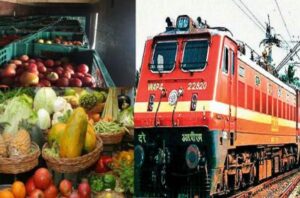 The railways were benefitted by the the movement of the harvest and food grains which enabled income to them, given that passenger and industrial goods services were closed for most of the lockdown period. The railways recorded over a 50% increase in income and almost a 100% increase in volumes of grains moved, in April and May this year.
The railways were benefitted by the the movement of the harvest and food grains which enabled income to them, given that passenger and industrial goods services were closed for most of the lockdown period. The railways recorded over a 50% increase in income and almost a 100% increase in volumes of grains moved, in April and May this year.
The Indian Railways’ Kisan Rail, which began operating from Friday, will lower the transport time of perishable food – fruit and vegetables and reduce the price burden on farmers by Rs 1,000 per tonne when compared with transportation by road.
It also needs to be noted that the migrants have been immersed back by the rural areas after they were unfortunately abandoned from urbanisation. So not only did the farmers feed urban families but also fed and sheltered the returning migrant families. 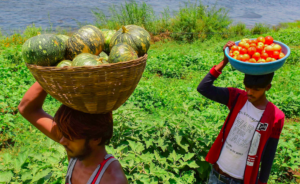
Indian agriculture can create a hurricane of opportunities. From drones to AI, digital devices, internet, modern engineering, storage arrangement, logistics, agro-equipment the sector can utilise many recent technological developments. The small Indian farmer in a globally-connected environment can progress in a way forward.
The Government’s recent reforms gave farmers the freedom to decide when, where, to whom and at what price to sell helping the micro economics aspect of agricultural sector. These modifications will go a long way in creation of a dynamic and pulsating agricultural sector in India.

